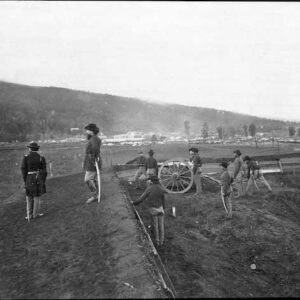Tag: Memphis & Charleston Railroad (M&C)
Wikipedia says: The Memphis and Charleston Railroad, completed in 1857, was the first railroad in the United States to link the Atlantic Ocean with the Mississippi River. Chartered in 1846, the 311 miles (501 km) 5 ft (1,524 mm) gauge railroad ran from Memphis, Tennessee to Stevenson, Alabama through the towns of Corinth, Mississippi and Huntsville, Alabama. The portion between Memphis and LaGrange, Tennessee was originally to be part of the LaGrange and Memphis Railroad, chartered in 1838. From Stevenson, the road was connected to Chattanooga, Tennessee via the Nashville and Chattanooga Railroad. In Alabama, the railroad followed the route of the Tuscumbia, Courtland and Decatur Railroad between Tuscumbia and Decatur, the first railroad to be built west of the Appalachian Mountains.
In many instances, it was the larger cities and towns, with higher populations, that received superior service and rail line access, as well higher quality trains.
At the time that this railroad was chartered, Memphis was still a small and rural town, with its only advantage being its connection to the Mississippi River.
The location of the railroad station in Memphis followed the familiar design of placing main railroad hubs and stations as close to the waterfront as possible for the convenience of shipping goods and transporting passengers. The steam boats brought people and freight up from the most southern point in New Orleans, and then the Memphis and Charleston Railroad was able to move them laterally, eventually connecting the Mississippi River with the port of Charleston.
The southerners thought that the “iron horse” would enrich the farmers and well-being of everyone between Charleston and Memphis. In 1852, the local Memphis paper advertised that they needed to hire 50 “able-bodied Negros” every month in order to compete the rail line. By 1853, forty miles were in operation, and the city of Memphis felt the zeitgeist of the railroads production which opened their eyes to greater railroad ventures.
One way in which the railroad connected the entire state of Tennessee was the state law that required railroads “provide, at or near every town containing as many as three hundred inhabitance, a waiting room for the use and accommodations of passengers.” Memphis, being on the westernmost border of the state, helped to provide rail access to the very small cities and towns located all along the southern border of the state.
In May 1857, more than 30,000 southerners gathered to celebrate the completion of the first railroad connecting the Atlantic Coast to Memphis, and to witness its first full journey which would lead to prosperity. When the passengers arrived late at night, they were greeted by music and ceremonies, marking an important milestone for the railroad industry. This celebration was called “The Marriage of the Waters”. Water was brought from the Atlantic Ocean and was then poured into the Mississippi River as a symbol of completion. President of the Railroad, Samuel Tate, was praised for his grand accomplishment as many investors felt assured that their money was safe.
The American Civil War
When the Civil War broke out in 1861, this railroad became of strategic importance as the only east–west railroad running through the Confederacy. On the morning of April 11, 1862, Union troops led by General Ormsby MacKnight Mitchel captured Huntsville, cutting off this railroad’s use for the Confederacy.
The railroad and its route through Corinth, Mississippi was a significant factor in the Battle of Shiloh in 1862.
Construction of the rail line still persisted during the Civil War because the owners of the railroad wanted to serve the Confederate Army. The plan was to allow the Confederates to use the railroad for free, however, it was not sustainable, and so the Confederate Army paid almost all the railroads in the south with Confederate bonds, which were deemed worthless after the War.
Showing the single result
